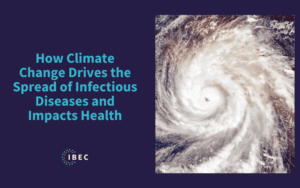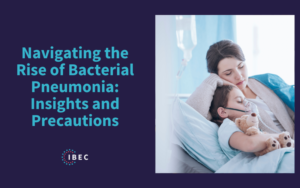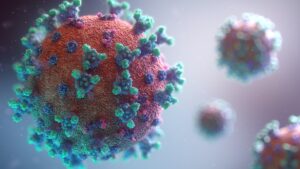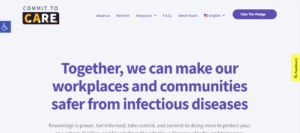C.L.E.A.N. Lessons Learned: How to protect the healthcare system from current and future pandemics
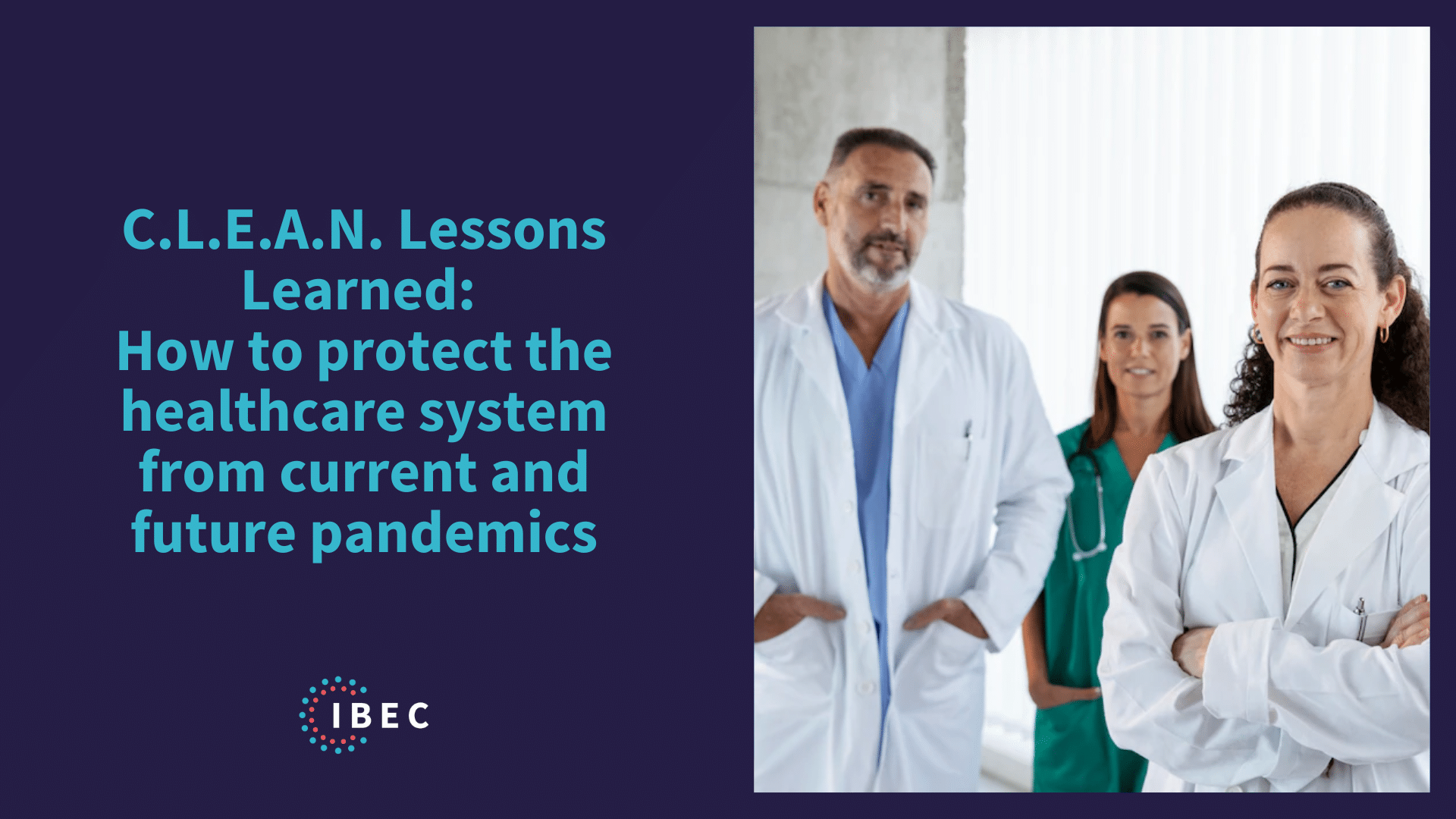
The COVID-19 pandemic caught the world off guard. Health organizations all over the globe rushed into a quick response to protect people from the threat of the airborne virus. Looking back, what changes would we have made to this response to make it more effective?
With newly surging cases of COVID-19, RSV, and the flu, we must take a step back and look at how different choices would have made a big difference in the outcome of the pandemic.
On November 2022, IBEC gathered a panel of experts to identify and discuss those decisions that made the response to COVID-19 cumbersome and sometimes ineffective, with the aim of protecting our healthcare system from future infectious disease threats.
The experts:
- Moderator:
- Sonya Stokes – Medical Director at Mount Sinai Health Partners PC.
- Speakers:
- Randy Rowell, M.Ed. – Building Partnerships. Strengthening Relationships.
- Laurence Svirchev, CIH, MA – Certified Industrial Hygienist (CIH), Earthquake Disaster Scientist, Scientific Manuscript Editor.
- Ted Cowan – Senior Recovery Specialist at DCMC Partners.
- Ranit Chatterjee, PhD – Disaster Management Professional.
5 key takeaways:
1. Dusting-off pre-pandemic plans.
When the COVID-19 pandemic started, multiple US states didn’t get the pandemic response plans off the shelves. Unfortunately, that greatly impacted the state’s ability to respond effectively because they weren’t looking at the things they had planned for ahead of time.
Lesson to be learned: Having pre-pandemic plans and resorting to them as soon as disaster strikes is a must-follow practice in current and future pandemics.
2. Considering the entire disaster cycle.
The plans deployed when COVID-19 started surging focused the response on how to mitigate the risk of infection. However, it did not consider how the entire disaster cycle would actually work and how one step can lead to the other.
Although the disaster cycle involves mitigation, it also includes factors such as preparedness, response, recovery, and prevention. These are important steps that need to be considered in any disaster response.
Lesson to be learned: We must consider the entire disaster cycle and its implications for current and future pandemic responses.
3. Considering the multifactorial nature of a disaster.
COVID-19 was considered a health emergency, and while the whole healthcare machine was working, it left out other vital stakeholders who were responsible for supporting the healthcare machine.
In a disaster such as a pandemic, it’s vital to take a multisectoral approach and involve experts from different sectors from beginning to end.
Lesson to be learned: For current and future pandemic responses, we must consider the multisectoral nature of a disaster.
4. Considering the post-epidemic long-term psychological and physiological effects.
Most of the action plans deployed for the COVID-19 pandemic did not consider the post-epidemic’s long-term psychological and physiological effects.
We need to consider not only the current issues but also the aftermath of those issues and the implications on an individual and collective level.
Lesson to be learned: For current and future pandemic responses, we must consider the post-epidemic long-term psychological and physiological effects.
5. Considering the supply chain.
One of the important things to emphasize in the US is that health systems do not manufacture products. They do not typically have a huge warehouse of medical supplies.
There is a need to connect the entire healthcare supply chain, which relies heavily on all different aspects of distributors, manufacturers, logistics, transportation, and other services to source their supplies.
Lesson to be learned: We must strengthen our healthcare supply chain resiliency for current and future pandemics.
Future steps to protect our healthcare force from current and future pandemics:
- Define the entire care pathway.
- Strengthen this pathway from screening, testing, and diagnosis to treatment, recovery, and rehabilitation.
- Improve data collection, disseminate data, and reach out to at-risk populations.
- Have more innovative public-private partnership models where we bring in various stakeholders.
Do you want to watch the full recording?
Watch past C.L.E.A.N. events here
Help IBEC continue its mission of making indoor spaces safer from infectious diseases.
Related Blogposts
How Climate Change is Propelling the Spread of Infectious Disease
By Stephane Bilodeau, Eng., Ph.D., FEC, Chief Science Officer at IBECClimate change is not only an ecological crisis; it fundamentally alters public health dynamics worldwide…
IBEC Statement on the Quarantine of Cargo Ship in Argentina Due to Suspected Mpox Case
The recent news regarding the quarantine of a cargo ship near Argentina’s Rosario Port due to a suspected case of mpox underscores the continued global…
Interdisciplinary Collaboration in Environmental Science: Pioneering Health Solutions with IBEC’s New CSO
The Integrated Bioscience and Built Environment Consortium (IBEC) proudly introduces its new Chief Scientific Officer (CSO), Stephane Bilodeau. Bringing over 25 years of diverse experience…
Navigating the Rise of Bacterial Pneumonia: Insights and Precautions
Navigating the Rise of Bacterial Pneumonia: Insights and Precautions As winter’s chill sets in, health professionals and organizations brace for the annual uptick in respiratory…
New COVID-19 Variant JN.1 Raises in the United States
JN.1 is a highly contagious, fast-spreading subvariant of omicron that has become the dominant strain in the country. According to data from the Centers for…
Pioneering Steps to Control Infectious Aerosols: Dr. Claire Bird Offers Expert Insight on ASHRAE’s New Draft Standard
As we navigate through the challenges posed by the COVID-19 pandemic and other airborne diseases, there is a dire need to implement measures that will…
IBEC Takes the Lead in Developing a Framework for Reducing Indoor Pathogen Transmission
Dear IBEC Partners and Supporters, As we continue to navigate the ongoing threat of airborne pathogens transmission in our shared indoor communities, it’s more important…
New Commit To C.A.R.E. Resources Deliver Innovative Indoor Air Quality Solutions for Safer Workplaces
The Commit to C.A.R.E initiative The Integrated Bioscience and Built Environment Consortium (IBEC) and The American Industrial Hygiene Association (AIHA), two leading organizations committed to…
Staying Ahead of Severe GAS Infections and Other Secondary Bacterial Infections
Severe Group A Streptococcal (GAS) infections, including invasive disease (iGAS), can lead to life-threatening illness and death. CDC is looking into an increase in…
Industry Leader L’Oréal Pledges to Support Commit to C.A.R.E.
Industry Leader L’Oréal Pledges to Support Commit to C.A.R.E. With health experts warning of the triple threat of the continued spread of new COVID-19…

